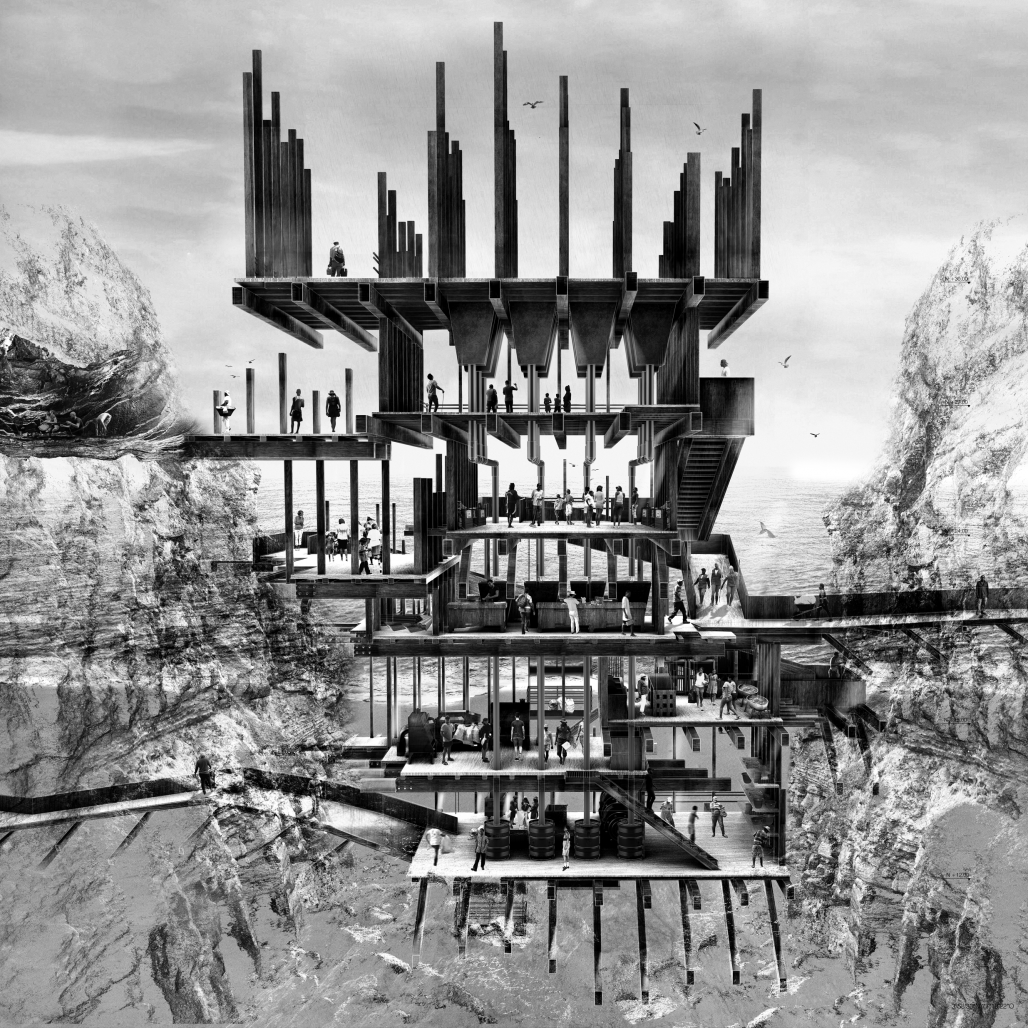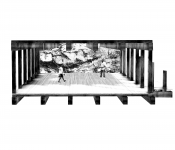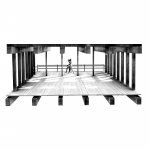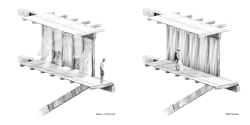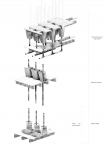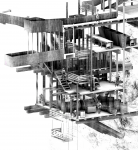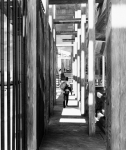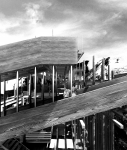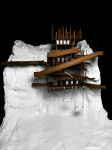Bahía Málaga is currently facing a severe public health and environmental crisis due to high contamination affecting its shores. The majority of waste reaching these areas consists of plastic debris that has traveled long distances in the sea, carrying hazardous liquids, lost objects, and fishing nets. This directly impacts the marine ecosystem and, in turn, the living conditions of its inhabitants, where humans, waste, and animals coexist constantly. The cliffs on the Colombian Pacific coast are often considerably isolated from the main towns, contributing to their invisibility and, consequently, waste accumulation. Additionally, due to their geographical location, they are directly exposed to intense waves, increasing the arrival of new objects buried in the sand surrounding these rock formations.
The significance of the cliff on the Pacific horizon is crucial, representing the collision between human activity and the sea. Despite lacking architectural interventions, its role is essential in an environment facing challenges such as pollution. Being a rocky, elevated, and dynamic environment, this landscape can experience significant alterations that could mark a turning point. Building on it does not imply destruction but rather the development of resilient strategies that promote collaboration among diverse social actors. These strategies could contribute to the creation and preservation of the coastal horizon, serving as a meeting point for harmony between nature and humans.
Humans inhabit between the built and the natural, generating new spatialities and new ways of dwelling. Understanding the dynamics in which recyclers and fishermen relate to their environment and the exposure in which they live daily becomes a design parameter for the facades. On one hand, the structure itself becomes the facade, unfolding the horizon through it, and inside becomes a canvas. Fishermen and recyclers can adapt their needs, habits, and essence to any void. Additionally, the stone acts as a mantle that envelops, where water, moss, humidity, and reflections summon a meeting in any space. Revealing this topographic environment pays homage to what cannot be controlled.
New forms begin to emerge, giving rise to different ways of inhabiting. Explorations start from a simple base to progressively complexify the building, turning it into a machine adapted to the specific needs of the place. This building serves as both a recycling center that takes waste collected from the beaches and transforms it into useful products through its upward process through the building, contributing to the local economy. Additionally, it functions as a shelter, training center, and preparation for local fishermen, establishing a close bond between these two actors.
Fishermen and recyclers are part of consolidating the building as a strategic point to encourage a change in the ecosystem and the creation of new traditions that engage with the plastic waste-related climate crisis affecting the marine ecosystem and the surrounding environment they inhabit daily. Through synergy, the building will operate as a engine of life, activity, and resilience.
2023
Building on a cliff involves a deep awareness of inherent risks, temporality, and environmental impacts. In the context of the Colombian Pacific, many constructions are grounded in understanding local resources and the ability to adapt to constant climatic variables. The use of wood as a primary construction material not only reflects sensitivity to the environment but also encourages greater consideration for its future implications. This approach aims for a more harmonious relationship between architecture and the environment, recognizing the need to preserve nature in such a delicate area as a cliff. The implementation of the balloon frame system is necessary to create a lightweight structure by interconnecting beams and columns. This ensures the rigidity of each platform without restricting flexibility and the progress of the project in terms of variability and construction pace.
Interconnectivity is a fundamental pillar at the core of this architectural project. The dynamic relationship among various social actors not only establishes a framework of convergences and divergences but also enriches how movement, as a constant flow of energy and activity, permeates and shapes the building's environment. This interaction among individuals creates a network of exchanges that intertwine in spaces, redefining the essence and purpose of the construction, turning it into a lively and dynamic meeting point.
The importance of water in the Colombian Pacific is vital. Despite being a region with one of the highest rainfall amounts, access to drinking water is scarce. Therefore, it is necessary to develop strategies that recognize water as a vital source, honoring the fundamental role this natural element plays in people's lives. Through a natural filtration system, rainwater flows through pipes and encounters containers containing layers of gravel, coal, sand, and stones. This gravity-driven process enables the natural filtration of water before it is used in the next usage cycle.
Building the horizon involves the implementation of a renewed system that merges animals, social actors, and natural territories in a territorial symbiosis. This convergence not only represents a physical connection between water and land but also symbolizes the union of human communities and natural environments in an interdependent fabric. It is the starting point for a new dynamic where the interaction between different elements fosters a deeper integration, creating a space where human life, biodiversity, and ecosystems intertwine.
Design: Laura García
Tutors: Daniela Atencio, Claudio Rossi, Daniel Bonilla
Favorited 3 times
